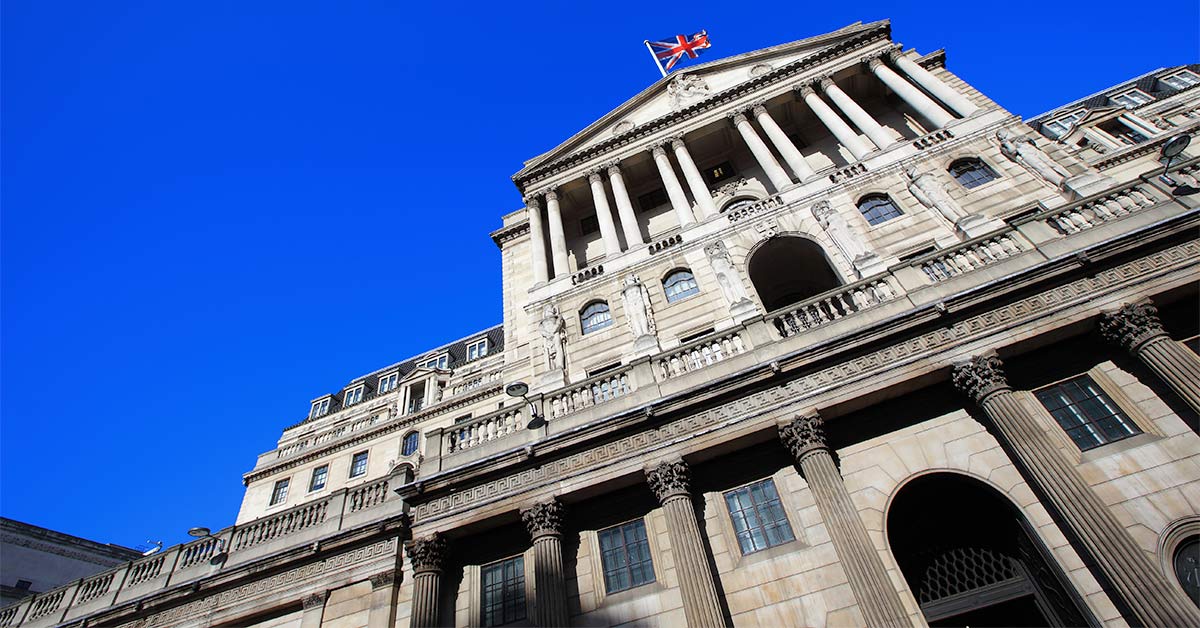UK inflation may shock gilt markets this week. But if so it’s likely to be a passing phase as price rises continue to cool over the summer.

Review of the week: Take the long view on rates
Article last updated 19 June 2023.
|
Quick take: - Inflation hasn’t fallen as fast in the UK as in other nations and there’s a chance that it will disappoint once again this week. |
It’s a big week for the UK. While the pandemic and Ukraine war upended global markets for energy, food and metals, the effects have appeared stickier in the UK than elsewhere. In the coming days, the Bank of England (BoE) will set the tone for its interest rate strategy, for the next few months at least.
After almost nine months of double-digit inflation, in April British CPI fell less than expected to 8.7%. This week, the Office for National Statistics is expected to announce that CPI fell just 20 basis points to 8.5% in May. This is much slower than the BoE had initially forecast when prices first started to balloon. BoE Governor Andrew Bailey last week told a parliamentary committee that a tight labour market was helping keep inflation stubbornly high. In the three months to April, private sector UK wages were 7.6% higher than a year earlier. Still, this measure is slow to be released and there are signs that the British jobs market is already cooling off.
Brits are now girding themselves for even higher interest rates. Some banks temporarily withdrew some mortgages last week as they reassessed the likely path of UK interest rates, bringing back memories of the mini-budget pandemonium of late 2022. We think this short-term rates scare will soon fade, driven by a continued downward trajectory for British inflation. We believe UK rates should have peaked by the end of the third quarter. The BoE’s forecasts, published at its last meeting, suggested that policymakers thought one further rate hike would be more than enough to bring inflation back to the 2% target. Inflation since then has been worse than expected, but even if it raises rates two or three more times, it will still be done by the end of the third quarter.
Another 25bps rate hike to 4.75% is almost guaranteed at this week’s BoE policy meeting. According to the UK bond market, investors expect short-term rate increases to be chased by lower interest rates in the future. Two-year gilts yield 5%, their highest level since the Global Financial Crisis, while the 10-year delivers 4.5%.
All eyes will be on this week’s inflation release.
| Index |
1 week |
3 months |
6 months |
1 year |
| FTSE All-Share |
0.9% |
4.1% |
6.1% |
11.3% |
| FTSE 100 |
1.1% |
4.3% |
6.5% |
12.7% |
| FTSE 250 |
-0.2% |
2.6% |
4.1% |
4.9% |
| FTSE SmallCap |
0.0% |
3.2% |
4.0% |
2.2% |
| S&P 500 |
0.8% |
5.7% |
9.5% |
17.2% |
| Euro Stoxx |
1.8% |
4.8% |
13.0% |
24.6% |
| Topix |
0.1% |
6.9% |
9.6% |
13.6% |
| Shanghai SE |
-0.4% |
-7.0% |
-4.0% |
-9.9% |
| FTSE Emerging |
1.2% |
3.3% |
2.0% |
0.5% |
Source: EIKON, data sterling total return to 16 June
| These figures refer to past performance, which isn’t a reliable indicator of future returns. The value of investments and the income from them may go down as well as up and you may not get back what you originally invested. |
Across the pond
Inflation in Europe and the US has retreated much quicker, allowing their central banks more flexibility when it comes to setting rates.
The US has taken advantage and paused its rate hikes to assess how the rapid increase is affecting its economy. The European Central Bank (ECB) is less sanguine and has continued to increase its rate, despite the Euro Area officially entering recession after two quarters of -0.1% GDP growth. Raising rates in a recession is typically a no-no, so why did the ECB still increase rates to cool Continental GDP growth and therefore inflation?
Rate-setting is more complicated for the ECB than for the BoE because of the euro. While the headline Euro Area inflation rate is 6.1%, it hides huge differences between members. In Estonia and Lithuania, it’s above 11%, both having peaked at near 25% last year. Slovenia’s is 8.4%, having been double-digits for the better part of a year. Some nations, like Greece and Spain, are already back within touching distance of the 2% inflation target. Most – including the European economic engines France, Germany and Italy – have inflation between 5% and 8%. The ECB has decided that it must continue squeezing rates higher to ensure inflation recedes throughout the bloc, even though it risks making an economic downturn worse. We believe economic reality will soon stay the ECB’s hand, however, especially if Continental inflation continues to drop as we expect.
Government bonds tend to do well after the last rate hike in a tightening cycle, as economic growth slows, inflation drops and investors begin forecasting lower rates in the coming years. That’s why we believe it’s a good time to carefully start increasing exposure to government bonds. We can’t be sure exactly when the peak will be ahead of time, but we expect it to be in the coming quarter.
If you would like to hear more about what’s going on in the global economy and how it affects the way we invest, please join us for our next Investment Insights webinar on Tuesday 11 July at 12.30pm. You can register here.
If you have any questions or comments, or if there’s anything you would like to see covered here, please get in touch by emailing review@rathbones.com. We’d love to hear from you.







